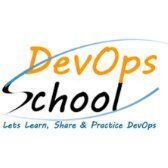#certification
-
Accelerate your AWS migration with AWS Training and Certification
-
Ace your Terraform Professional exam: 5 tips from certified pros
-
Top Five Cloud Certifications to Pursue in 2025
- 1 comment
- 2,000 views
-
Zero to hero: Your guide to career growth through AWS Certifications
-
Press start on AWS Training for game development
-
AWS Certified AI Practitioner
- 1 comment
- 45 views
-
Navigate your AWS Certification journey like an AWS pro
-
Become an AI/ML Early Adopter with AWS Certification
-
AWS Certified AI Practitioner – New Online Course Launched
-
Guide to AWS Certification
- 1 comment
- 43 views
-
10 AWS Services to Master for the AWS Developer Associate Exam
-
New courses and certification updates from AWS Training and Certification in April 2024
- 1 comment
- 1,279 views
-
Popular Google Certification for All Areas in the Tech Industry
-
How to Get CMMC Certified
- 1 comment
- 4,072 views
-
Showcase your skills: Discover new ways to skill up with Google Cloud Credentials
-
New courses and certification offerings from AWS Training and Certification in March 2024
- 1 comment
- 403 views
-
Microsoft Certified: DevOps Engineer Expert – Exam AZ-400: Designing and Implementing Microsoft DevOps Solutions
- 1 comment
- 70 views
-
Microsoft Certified: Azure Developer Associate – Exam AZ-204: Developing Solutions for Microsoft Azure
- 1 comment
- 69 views
-
Microsoft Certified: Azure Administrator Associate – Exam AZ-104: Microsoft Azure Administrator
-
Certified DevSecOps Engineer Course
- 1 comment
- 64 views


.png.6dd3056f38e93712a18d153891e8e0fc.png.1dbd1e5f05de09e66333e631e3342b83.png.933f4dc78ef5a5d2971934bd41ead8a1.png)







